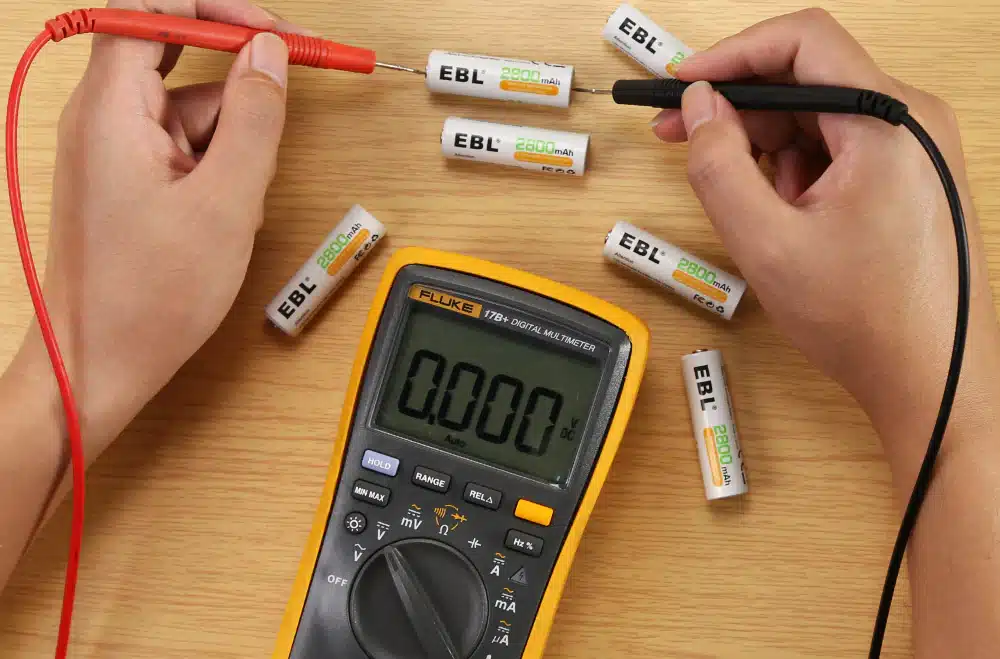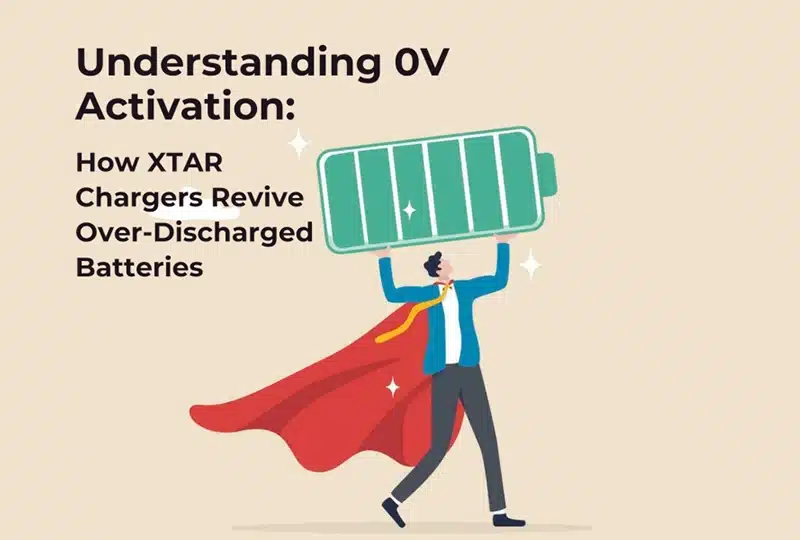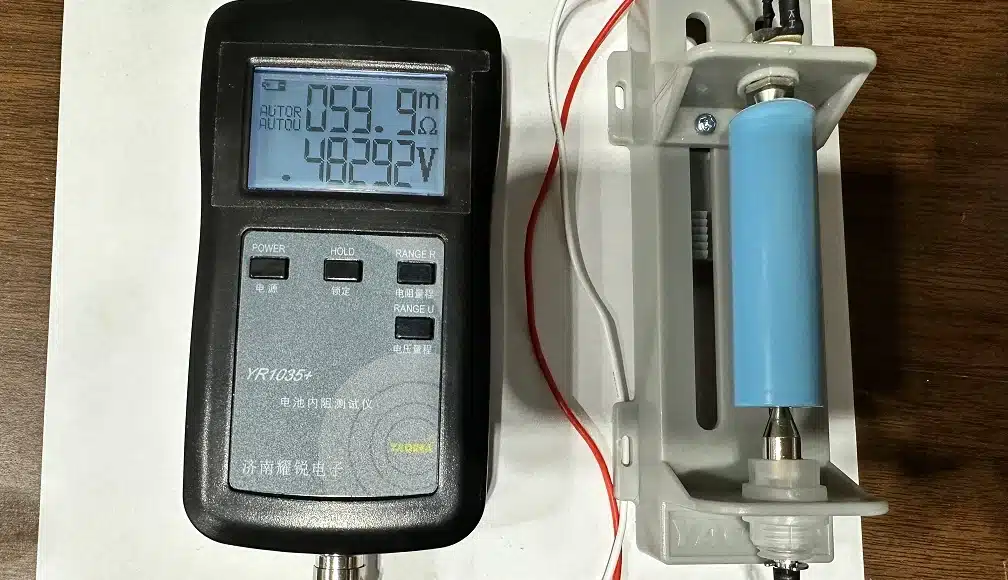Your lithium battery shows zero voltage? Don’t worry. This article will delve into the common causes of lithium battery zero voltage and provide some practical solutions to help you determine whether the battery can be saved and how to avoid this situation from happening again. We will reveal the secrets of lithium battery zero voltage in the most easy-to-understand way.
Last updated: May 16, 2025 | Estimated reading time: 5 minutes
Table of Contents
ToggleThe reason why lithium batteries have zero voltage
There may be many reasons why a lithium battery shows zero voltage. Understanding these reasons can help you better judge the condition of the battery and choose the appropriate solution:

- Over-discharge: Over-discharging a lithium battery below its minimum safe voltage (3V or 2.5V) may cause the battery to enter a “deep sleep” state, showing zero voltage. This is usually caused by long periods of non-use or continuous power consumption of the device.
- Short Circuit: An internal or external short circuit causes the battery to discharge rapidly, dropping its voltage to 0. A short circuit can be caused by physical damage inside the battery or by an external circuit failure.
- Aging: Over time, lithium batteries degrade in performance and their internal resistance increases. This can cause the battery to be unable to maintain sufficient voltage and eventually show zero voltage.
- Faulty charger: Using a faulty charger may cause the battery to not charge properly and eventually drain to zero voltage.
- Battery protection circuit activated: Lithium batteries are usually equipped with protection circuits to prevent overcharging, over-discharging and short circuiting. In some cases, over-discharging may trigger the protection circuit to cut off the output of the battery, causing the voltage to display zero.
- Improper long-term storage: If lithium batteries are stored for a long time in a fully discharged state, the battery will be seriously depleted, which will cause permanent damage and make it irreversible.
- Temperature Extremes: Exposure to extremely high or low temperatures can affect the performance of your battery and cause the voltage to drop.
Can 0-voltage lithium batteries still be activated?

Whether the 0 voltage lithium battery can still be activated depends on the cause of the zero voltage and the extent of the battery damage.
If the battery has simply gone into sleep mode due to excessive discharge, you can try reactivating it.
If the battery has been severely damaged (for example, internal short circuit or electrolyte leakage), it may not be recoverable and force charging may be dangerous.
How to restore 0V li-ion batteries
Warning: There are risks in trying to restore a zero-voltage lithium battery. If the battery swells, deforms, smells strange, or overheats, do not attempt to restore it and dispose of it safely immediately.

Below are some ways to try to restore a zero voltage lithium battery:
- Use a smart charger with a “zero voltage charging” feature: Some smart chargers have a special feature that can start charging an over-discharged battery at a low current in an attempt to wake up the battery.
- Slow charging: Try charging with a charger that uses a low current (e.g., 0.1C or 0.2C, where C is the battery capacity). Monitor the battery temperature closely and stop charging immediately if the battery overheats.
- Jump-Starting: Connect a zero voltage battery in parallel with another battery of the same type with normal voltage for a few minutes. This can help restore the voltage of the zero voltage battery so that it can be recognized by a normal charger. Be careful not to connect the positive and negative poles in reverse.
- Using an adjustable power supply: Use an adjustable power supply to charge the battery for a few minutes at a voltage slightly lower than the nominal voltage of the battery (e.g., 3.5V for a 3.7V Li-ion battery) and a very low current (e.g., 50mA). Observe whether the battery voltage begins to rise.
- Battery reconditioning equipment: Use specialized battery reconditioning equipment to attempt to recondition the battery by controlling the charge and discharge cycles.
If after trying the above methods, the battery still cannot be charged or the capacity is significantly reduced after charging, the battery may need to be replaced.
How to avoid zero voltage of lithium battery
Prevention is better than cure. Here are some tips to avoid zero voltage in lithium batteries:

Avoid over-discharge: Try to avoid completely draining the lithium battery.
Charge regularly: Even if you are not using the device, you should charge the lithium battery regularly to prevent it from over-discharging.
Use the appropriate charger: Use only a charger recommended by the manufacturer or compatible with the battery.
Avoid extreme temperatures: Store lithium batteries in a cool, dry place away from direct sunlight and high temperatures.
Keep the battery partially charged during long-term storage: If you need to store the lithium battery for a long time, it is best to charge it to 40%-60% of its power.
Use devices with over-discharge protection: Choose devices with over-discharge protection that can automatically shut down when the battery voltage is too low.
Will the lithium battery after zero voltage affect the performance of the device?
Even if a zero voltage lithium battery is successfully restored, its performance may be affected:
Capacity reduction: The battery’s discharge capacity may be reduced to 80~90%, resulting in a shorter battery life.
Increased internal resistance: The internal resistance of the battery may increase, resulting in a decrease in output power.
Shortened cycle life: The cycle life of the battery may be shortened, causing the battery to age faster.
Reduced safety: In extreme cases, the restored battery may be unsafe.
Therefore, even if a zero-voltage lithium battery can be restored, its performance should be closely monitored and replaced with a new battery if necessary.
Conclusion
Lithium battery zero voltage is a common problem, but not all zero voltage batteries are irreparable. By understanding the causes of zero voltage and taking appropriate recovery and prevention measures, you can maximize the life of your lithium battery and ensure the safe operation of your equipment. If you have any concerns about the battery condition, please consult our Hongyitai professional lithium-ion battery manufacturer.
